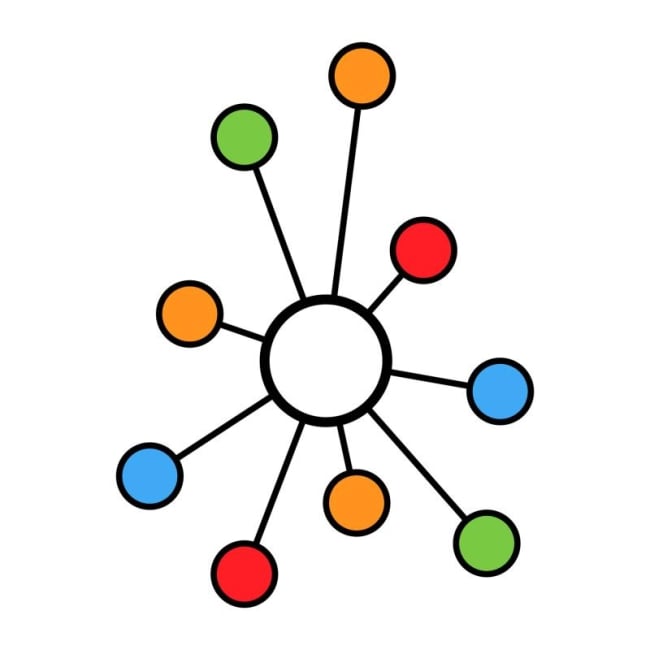You have /5 articles left.
Sign up for a free account or log in.

Ondřej Pros/istock/getty images plus
Innovative community colleges have advanced many crucial priorities—introducing pathways, restructuring student services to improve the student experience and tackling barriers to student success outside the classroom. But they will never achieve their mission of achieving better student outcomes until they face the most difficult and important challenge: creating a culture of teaching and learning excellence on their campuses.
That will require more community colleges to introduce evidence-based instructional practices to foster student learning. They will also have to improve their ability to personalize instruction and create self-directed, active learning experiences that enable students from diverse backgrounds to build on what they know and own what they learn. And finally, they will have to create an institutional culture that embraces professional learning for continuous improvement over the long haul.
Nationwide, however, many community colleges lack the resources, expertise and leadership focus to make this happen. While some institutions have Centers for Teaching and Learning to help faculty and staff members test promising approaches to teaching and student support, many—particularly smaller, rural community colleges—lack the institutional structures that would allow faculty to explore new strategies and learn from each other.
For example, at many community colleges, leadership for professional learning is the responsibility of one administrator—the chief academic officer, who is in charge of everything from academic affairs and creating new programs to faculty hiring, evaluation and promotion as well as accreditation. At others, such centers are led by faculty or staff on partial release with numerous other responsibilities, while small rural institutions often don’t have the budget or dedicated full-time leadership for professional learning. Meanwhile, some institutions have strong professional learning programs but few mechanisms to share faculty expertise and incentivize faculty members across institutions to work together to explore evidence-based instructional approaches and systematically address ongoing and immediate needs for instructors.
Over the past two years, the North Carolina community colleges—in partnership with the Belk Center for Community College Leadership and Research at North Carolina State University, the North Carolina Student Success Center, and Achieving the Dream—have taken on these challenges. In 2019, they began exploring what’s being done to support teaching and learning, and what still needs to be done, at community colleges in North Carolina—leading conversations with over 200 individuals around the state, including 130 full-time and part-time/adjunct faculty members. Several key themes emerged, notably the need to:
- Establish a teaching and learning network in North Carolina;
- Increase support for part-time/adjunct faculty;
- Provide expertise to align teaching and learning innovation with broader student success initiatives; and
- Offer additional support for faculty members to connect their work to student success and the strategic plan of their institution.
The partners have been working together to radically rethink how to better advance equity-focused teaching and learning in North Carolina, introducing a promising new statewide model with regionally affiliated hubs that are strengthening the capacity of campuses to elevate the importance of and improve teaching and learning. The hubs are designed to help full- and part-time faculty and staff to adopt, test and scale evidence-based teaching; to strengthen campus leadership to bolster capacity for supporting student, faculty and institutional learning; and, ultimately, to create a shared mission of fostering student success across the state.
Four teaching and learning hubs—Central, East, Piedmont and West— have been established to support all 58 community colleges in North Carolina. They offer in-person, virtual and hybrid workshops and seminars to introduce faculty to evidence-based strategies that have increased equitable student success outcomes across the nation. Each hub is led by co-directors from two of the institutions within the hub, all of whom have extensive teaching experience. Working with local campus networks and professional leaders, the hubs support evidenced-based practices on the campuses. They are helping faculty take leadership for their own learning and work collegially to strengthen their practice.
Continually Identifying Needs
To further identify the needs across the state, the initiative has conducted a Survey of Faculty Professional Development Interests and Experiences that was completed by more than 2,800 faculty across North Carolina. This survey was supplemented with a survey of the 58 North Carolina community colleges’ chief academic officers on how professional learning is resourced, designed and administered at their institution. Those findings serve as the basis for professional learning opportunities informed by the expertise of the national partners and coordinated across the system by the hub co-directors and chief academic officers.
In addition to surveys, hub co-directors visit their regionally affiliated colleges, building relationships with professional learning leaders and chief academic officers on each campus. The hub leaders regularly receive feedback following sessions that have resulted in significant changes—rethinking how, where and when faculty meet; how professional learning is organized and facilitated; and how institutions can use ongoing professional learning efforts as springboards to encourage faculty leadership in coordinating new learning opportunities on their campuses.
Local Needs and ‘Strategy-Specific’ Approaches
A key focus of the work is to advance evidence-based and high-impact practices that have been shown to build student learning and close equity gaps, promote culturally responsive pedagogies that can help build equity and engage first-generation and marginalized students, and create structures and mechanisms for sharing practices among participating institutions.
At the same time, while community colleges across the state share many characteristics, challenges and goals, the regional nature of the hubs allow colleges to tailor trainings to the needs of faculty and staff and to focus resources on the most pressing institutional needs. That is particularly important for smaller, less resourced institutions and also for connecting smaller rural colleges in the system.
For instance, leaders of North Carolina’s West Hub noted that, at first, there was a great deal of interest in introducing high-impact practices and making connections among faculty within the same discipline, particularly in departments that have few instructors in specific subject areas. As they looked deeper, they found that their support could have the greatest impact with a focus on direct application of “strategy-specific” best practices, such as helping faculty engage first-year students or supporting teachers in making classroom practices and learning materials more equitable and inclusive.
Another example is the East Hub, which last fall introduced a technology series to help instructors increase student engagement through online and hybrid teaching approaches. It is now focused on a range of issues for staff and faculty, including student mental health issues; institutional ability to support different types of students, including single parents, veterans and members of the LGBTQ community; and broader diversity, equity and inclusion programs.
Creating and Supporting Faculty Engagement and Leadership
Engaging faculty, both full- and part-time, in this work requires a strong network in each hub, starting with the co-directors and connecting at the institutional level with the chief academic officers, professional learning leaders on the campuses and existing teaching and learning initiatives. It requires materials, workshops and seminars that are responsive to faculty needs but also provide proven practices that will lead to greater student success. And ultimately, it will require institutions (if they have not already done so) to commit to strengthening teaching and learning in their strategic plans, hiring and employment procedures, and professional learning practices.
Achieving the Dream is helping to advance the institution-level work through a series of capacity-building workshops in each hub. Here, the audience is professional learning leaders and chief academic officers, and the focus of the programs is to strengthen each college’s efforts in professional learning—both in terms of the quality of professional learning programs and the ways in which colleges can begin to leverage professional learning to support their strategic priorities.
Already, some of the hubs are adjusting delivery to address feedback from faculty and staff. The West Hub has focused on introducing three events in a series—a first that focuses on basic theory, a second focused on hands-on application and a third and final focused on follow-up and reflection. This hub is also trying to be explicit about what each session is, what faculty and staff will get from it, and whom it is designed to help to make it easier for participants to decide whether to participate. For its part, the East Hub has shortened its sessions to between an hour and 1.5 hours maximum and is offering them multiple times, varying delivery times and days. It is also creating learning labs—sessions where they get all the faculty in one room to watch and participate together, discuss among themselves, and make presentations.
Helping Experienced Faculty Expand Their Repertoire
The faculty most involved in hub professional learning programs thus far are not inexperienced instructors but those who have taught for more than 10 years and seek actionable, practical guidance to stay current. The East Hub co-directors tell stories about the culinary instructor who has been in the classroom a dozen years yet who now recognizes that, given the changing student population, it is time to learn strategies that promote diversity, equity and inclusion. They also speak of the experienced math teacher who sees that he can’t just concentrate on equations but must look at students as people and be less terse with feedback. Even one of the hub leaders, who has been an instructor for 27 years, said she had to increase her focus on giving students more voice and choice in her classroom.
Bolstering Institutional Leadership for Teaching Excellence
David R. Shockley, president of Surry Community College, said, “For this effort to pay dividends, senior administrators will have to become actively involved within their respective colleges and within the region. If not, nothing will change.” To ensure there is strong leadership for the initiative, the Aspen Institute’s College Excellence Program has helped design and deliver a series of workshops on how North Carolina’s community college presidents can develop and execute a comprehensive strategy for enhancing teaching and learning excellence as part of the Belk Center’s Presidents’ Academy.
Establishing a Research Agenda
We recognize that there is a great deal that still has to be learned about the effectiveness and impact of the model and its implementation. Under the direction of the Belk Center, research partner DVP-PRAXIS LTD is conducting an implementation study and exploring the components of professional learning provided by the hubs from the perspective of faculty and what can be improved. They are also studying the factors supporting and hindering successful hub implementation and faculty participation, as well as the relationship between faculty participation in hub professional learning and changes being implemented in classroom teaching.
The researchers will also conduct an outcomes study examining how faculty participation in professional learning impacts students’ educational outcomes, including: 1) whether students have better course outcomes (pass rate, course grade) when faculty have engaged in hub-related professional learning, 2) whether students who take courses with faculty engaging in professional learning are more likely to be retained in subsequent semesters and 3) the impact of faculty engagement in professional learning on specific student subgroups.
According to some of the hub leaders, neighboring states have expressed interest in the hub approach. Our organizations are considering how this effort might be scaled up to other states and the potential to spread this approach nationwide. We believe that the use of hubs to support community college teaching can help ensure that all institutions—including underresourced colleges, rural institutions and those serving racially minoritized and poverty-affected students—focus on what matters most to ensure student success. While they are not the perfect substitute for robust teaching and learning centers on every campus, they can effectively extend professional learning across campuses to provide the ongoing, systematic support to help faculty to collaborate and continuously improve and reinvigorate their teaching. If we want all students to complete their degrees and make significant contributions to the economic health and vitality of their communities, we need to help all colleges build their teaching and learning capacity or risk another decade of institutional transformation that holds the line on—rather than accelerates—student success.




